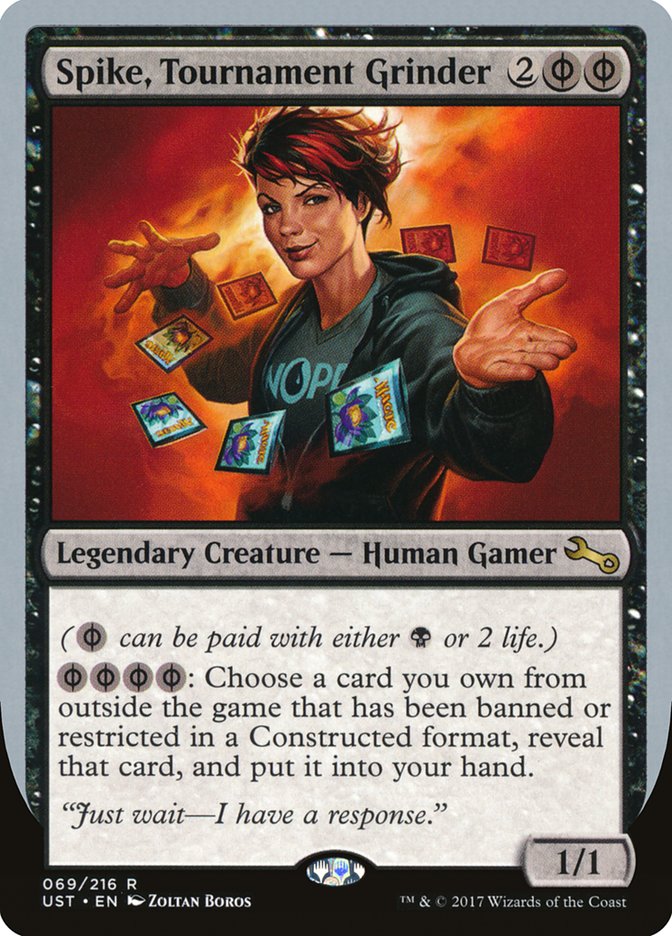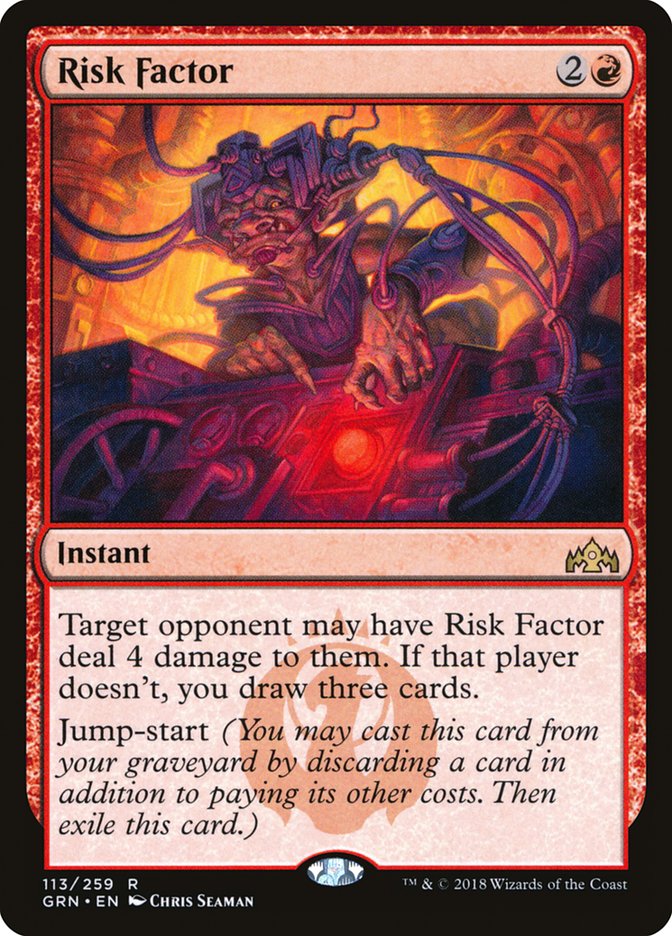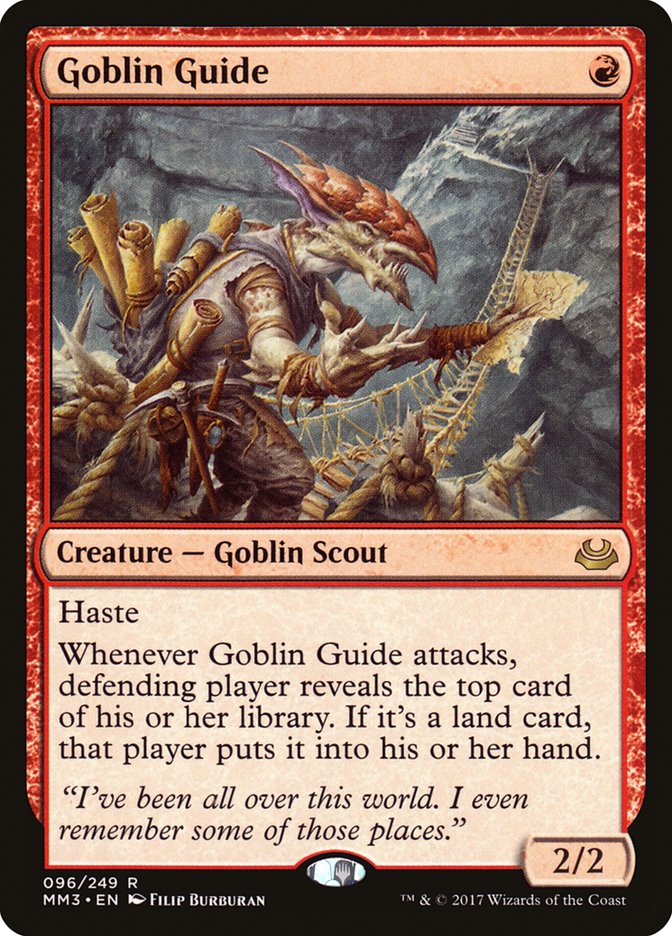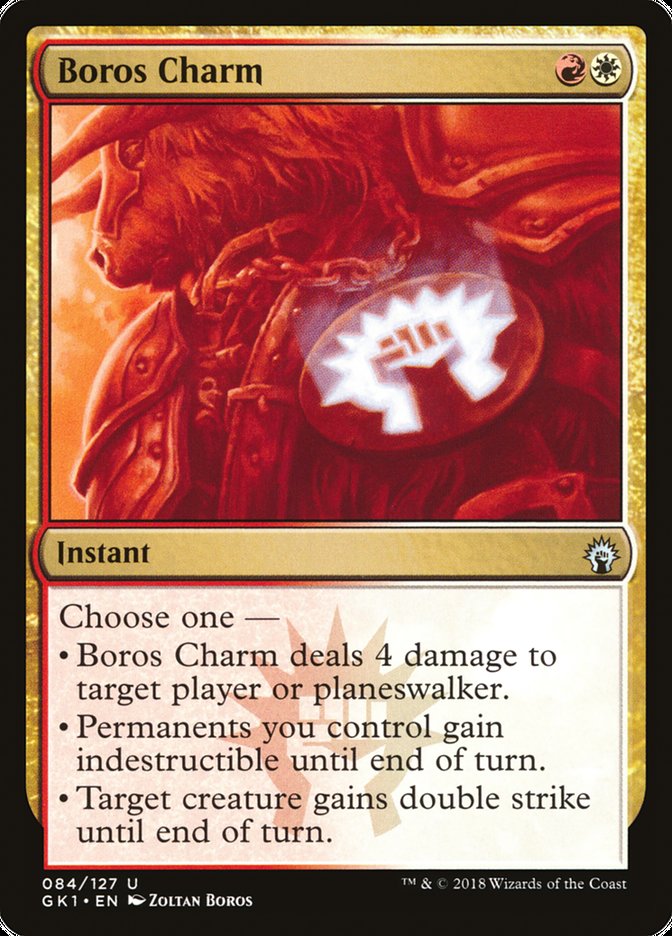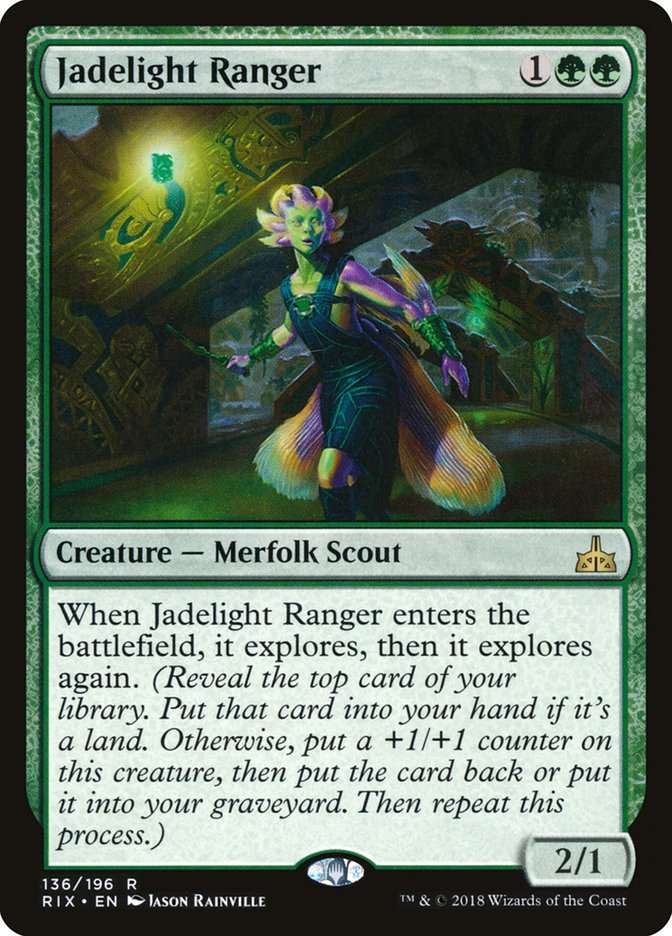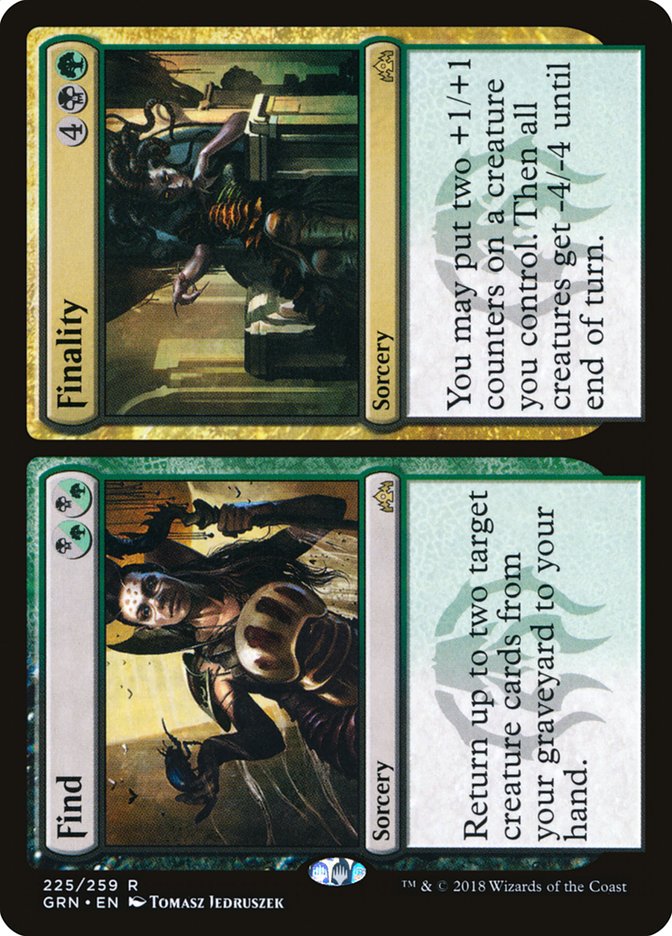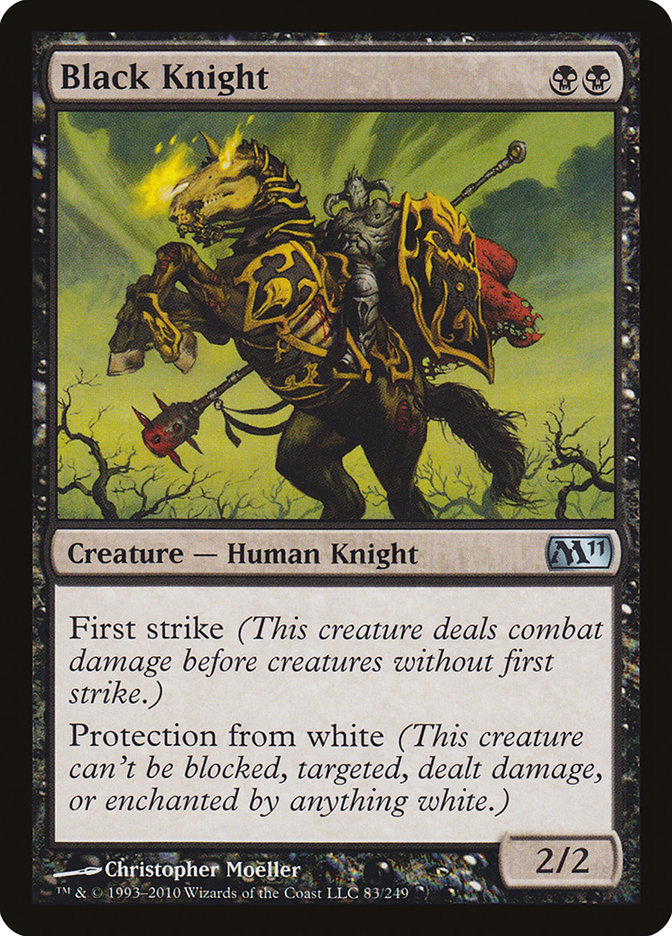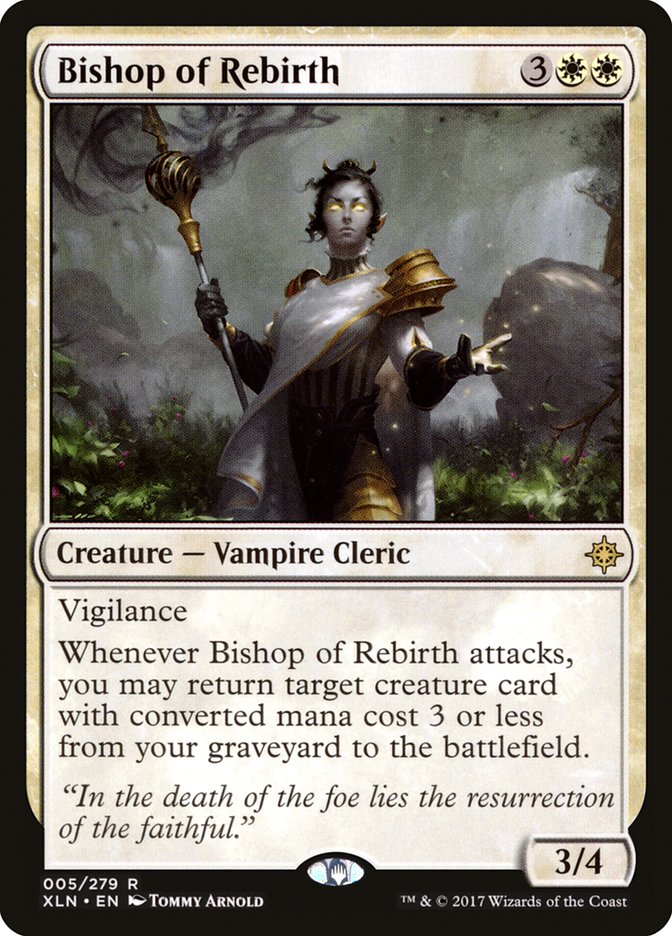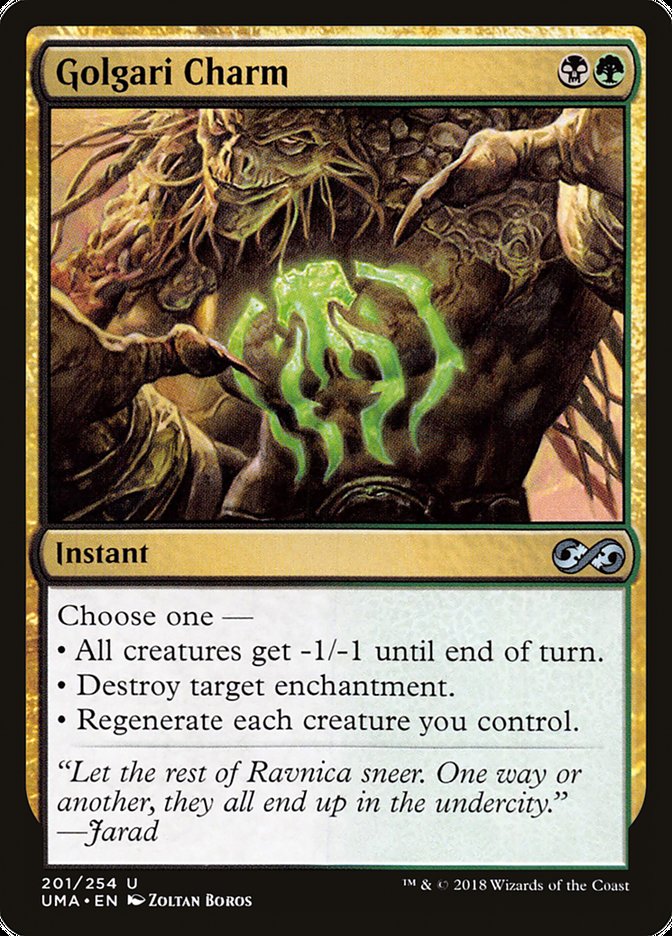What is it that separates Magic’s greatest players from the rest of us?
This is the kind of question that doesn’t have a right answer. You could
ask ten different great Magic players and get ten different answers, and
none of them would be wrong. Yes, the best players in the world are better
at combat math than the rest of us. They think more steps ahead; they play
a lot more Magic. They have access to teams and resources the rest of us
can only dream of; they make fewer mistakes. All these things are true, but
none of them are interesting.
For me, the interesting answer to this question isn’t a quality;
it’s an attitude. The best players in the world are devoted to obtaining
every possible edge in a game of Magic, no matter how small. Where the rest
of us shrug and decide it probably doesn’t matter very much, the best of
the best devote themselves to figuring out the right answer and
implementing it every time. There’s a lot of Magic waiting to be played on
the margins, Magic you could go your whole life without ever thinking about
while the world’s best lose sleep over it.
To head-off a possible line of discussion: no, I’m not talking about
cheating or angle-shooting. Some might define these things as edges to be
gained, but I wouldn’t, nor would any reputable Magic player. Believe it or
not, Magic is more than deep enough to continually reward your study of the
game with ethical edges, no matter how much time and effort you sink into
it.
I don’t have a how-to guide for you on these elusive edges. You’re not
going to read this article and magically understand all the razor thin
edges that the best players have over you. There’s no substitute for hard
work, and if there were, this article certainly isn’t it.
that every game has unique circumstances you can take advantage of if you
know how.
No, my goal is to open your eyes. It’s way too easy to get trapped in the
Magic you know and become unable to even imagine the rest of what the game
has to offer. It’s all too easy to spend all your time playing Magic
thinking about the same things you’ve always thought about, never anything
new. You’ll get better at the things you know about that way, but you’ll be
inherently limited as a player.
The good news is that all you need to do is be exposed to these minute
edges once and then set your brain churning on them. I can’t tell you how
to use these things to increase your win rate 5% in every format, but I can
show you that these things are out there. The rest is up to you.
Risk Versus Reward
I’m going to ease you in to start. Think back to all the times during a
match of Magic when you’ve seen a possible line and immediately recoiled.
“That’s way too complicated, and I have no idea if it’s right or not. I’m
just going to play it safe and take the line I know is alright.”
This is a common scenario for many of us. We reach a point in a game where
we think a certain play, maybe a potential attack or a way to sequence,
might be right, but we’re not sure and the play is weird. It
probably goes against common wisdom in the matchup, likely playing outside
of the role you’re meant to be. Despite all that, the play looks appealing
anyway, but you never make it.
This is a very classic risk versus reward scenario. You have a play on your
mind which, if it’s wrong, it’s wrong by a lot. Attacking when you
should have blocked is a mistake that’s hard to come back from. These
unorthodox plays are always very risky, but at the same time, don’t come
with a lot of reward. If they’re better than the orthodox play, it’s only
by a little. Often, they’ll leave you in a position to win on the margins,
but games of Magic don’t come down to the margins often enough for that to
be worth the risk when you’re not confident in the play in the first place.
The calculus here is simple: you don’t make the play. It’s not a difficult
decision in the end. Making the play involves taking on a lot of risk for
little reward, so making it is foolish. So, you don’t make the play and
move on with your life. Then the next time a spot like this comes up, you
don’t make the play a little quicker. You’ve already done that math. This
pattern repeats, until eventually you stop even really thinking about
unorthodox plays since you never make them. You’re stuck.
Example: You’re playing Jund against Humans. Your opponent has led with
Champion of the Parish into Kitesail Freebooter, and your only battlefield
presence is a 4/5 Tarmogoyf. You were on the play, and on your turn 3
you’re planning on playing a Scavenging Ooze and a tapped land. Do you
attack with the Tarmogoyf?
The orthodox answer here is a resounding no. Humans is firmly the aggressor
in the matchup and attacking with the Tarmogoyf is trading four points of
damage from the Goyf for likely three points of damage from the Champion,
not a good trade when your life total is the more relevant one. However, if
you broaden your thought range just a little:
Attacking with Tarmogoyf lets you get value out of it in the event that
their turn 3 play is Reflector Mage. You’d always rather have your cards do
something rather than nothing, and attacking this turn is a clear way to
guarantee your Tarmogoyf does something. Some games will come down to the
four damage mattering, but most won’t.
This is the exact kind of play I’ve been talking about. There’s a clear and
good reason for making the unorthodox play, but it’s still unorthodox. If
it’s right, it isn’t right by much. Making the play doesn’t make much
sense, until you consider the fact that finding the actually correct answer
in these spots is one of the things that makes the great players great. If
the play is right, making it this time won’t help you much. But making it
every time, it’s right over the course of your career? Now we’re talking.
I don’t know the right answer for this example. I mean, I couldn’t possibly
have one because it depends way too much on context. The play is right on
the line. But the correct answer to this Jund example doesn’t matter very
much. What matters is the idea that if you want to be the best, you can’t
shortcut these things to “probably not worth it” and forget about them. You
need to resolve yourself to stop shrugging and start actually answering
these questions. This will probably mean experimenting with some wild lines
in-game, and that will probably translate to some losses along the way, but
no one ever said the path to greatness was easy.
Playing the Forcing Game
Some of the coolest plays you can make in Magic involve dabbling in the
forced-play space. You know that your opponent is forced to make a specific
play and there’s lots of ways you can punish them. Let’s look at an
example:
You’re playing Burn against an opponent who, surprise surprise, is playing
Jund. You skillfully won the die roll and lead on Goblin Guide. The trigger
reveals a Lightning Bolt. After drawing said Lightning Bolt, your opponent
plays a Blackcleave Cliffs and passes the turn. Do you attack?
One of the keys to the Jund versus Burn matchup is that Burn’s creatures
are mostly awful. Jund plays a lot of removal and can generally ensure that
all of Burn’s creatures are good for one attack at most. That’s good,
because Jund stands no chance when Burn gets to use its creatures as
recurring damage sources.
Here, you know your opponent has the Lightning Bolt for your Goblin Guide.
If you attack, they’ll resolve the Goblin Guide trigger and then Lightning
Bolt your Guide before damage is dealt. This play is virtually forced from
them, they can’t afford to take extra damage from your Goblin Guide. But
what if you don’t attack, and instead just play a land and pass the turn,
Boros Charm at the ready?
Most of the time, your Jund opponent will grimace and Bolt your Goblin
Guide at the end step. They have plenty of removal and can’t afford to take
any more damage from that Guide, so they may as well be mana efficient.
When this happens, you have won the exchange: you denied them a Goblin
Guide trigger. A small edge, but an edge nonetheless.
But will this always be the case? What if the Jund player happened to be
very short on removal and is so scared of Eidolon of the Great Revel that
they feel they must hold the Bolt for it? What if it’s post-sideboard and
they have a Collective Brutality they really wanted a target for? Most of
the time, they will Bolt the Guide, but not always. Whenever they don’t,
you’re behind on the exchange and would have been much better off by truly
forcing their hand with the attack.
The moral of this story is that there’s room to find edges in subverting
your opponent’s expectations when they have a forced play, but you must be
careful. In general, all these plays will be in the genre of making the
play your opponent is forced into less good, but you must make sure you
don’t make it so much less good that it’s no longer forced.
Real Example: Late in a Standard Golgari Midrange mirror, I’m way behind.
My opponent has a terrifyingly wide battlefield protecting a Vivien Reid
that I haven’t matched. My only asset is a Carnage Tyrant and some
Wildgrowth Walkers, but I’m so behind on the battlefield that they can’t
attack. I’ll be losing to Vivien Reid’s ultimate in short order unless I
find a Finality.
I play a Jadelight Ranger to dig and see the Finality finally. I pass the
turn, and my opponent knows what’s up. On my next turn, I will play
Finality, clear their battlefield, and get some chip damage in on Vivien
Reid. This play is forced by me and it’s now their job to weaken it. They
choose to employ the time-tested strategy of attacking when your
battlefield is about to be wrathed, but things go awry: they attack too
much. They swing so heavily into my defensive Carnage Tyrant and assorted
small creatures that on my next turn, I’m no longer forced to cast
Finality. I instead cast Find, develop my battlefield, attack the Vivien
and suddenly find myself ahead in a game I don’t think the Finality would
have won for me.
Ultimately, these scenarios are yet another example of the risk versus
reward problem from before; when your opponent is forced to make a specific
play, it means times are tough for them. You can make use of the fact that
you know what they must do to gain a small edge, but if you go too far you
risk throwing the game away. Often, this means that we just don’t punish
our opponent’s forced plays because we’re scared of the things that can go
wrong. Once again, this is a great strategy for being mediocre at Magic,
but not a good one for being great. Learn, test your limits, and explore
how these scenarios work. Accept that you’ll lose along the way, but the
losses won’t be forever.
One last note before moving on: the Jund versus Humans example from the
last section actually has a really neat forced play element to it. If you
choose not to attack with the Tarmogoyf and your opponent has a Reflector
Mage, they are very likely to play it. If you attack and they have both
Reflector Mage and Mantis Rider, they are now heavily incentivized to just
jam the Mantis Rider. This dynamic makes the attack worse, but not so much
worse that I think it’s always wrong. Always keep in mind that changing
your play will cause your opponent to change theirs.
Unique Circumstances within Pattern Recognition
When describing Magic to the unenlightened, one of the go-to phrases is
something along the lines of “it’s a cross between poker and chess.” Fair
enough. It’s the chess part I want to focus on right now.
One of the big differences between Magic and chess is that in chess, the
capabilities of the pieces are well-defined and narrow. On any given turn,
you know which eight squares your Knight can move to. On an empty board,
your Bishop might be able to move to any of thirteen squares. You can tell
these things at a glance and know exactly what your pieces are capable of.
Magic isn’t so simple.
One of the biggest hurdles to becoming a mediocre Magic player is
understanding that the abilities of your cards are limited. Hand a
relatively new player a Humans deck and the range of things they will
consider naming with Meddling Mage will be roughly as large as their
imagination. The number of attacks they decline with Kitesail Freebooter
because “they might need to block” will somehow be higher than that range
is wide. Magic cards can do a lot of things.
The first big level up in Magic is understanding that despite the huge
range of things your cards can do, there’s a much narrower range
of things they should do. Your aggressive creatures should attack,
your Meddling Mages should name one of four cards in your opponent’s deck.
These things are much more scripted than they appear at first blush.
Understanding a matchup in Magic is all about pattern recognition. If you
go into a new matchup cold, there’s probably a lot of things you think you
can do to win. Most of them are wrong. Magic rewards staying in your lane
pretty heavily, and most matchups will punish you for straying from that
lane. Your cards all have a job to do and it’s your job to make sure they
do their assigned work.
The second big level-up in Magic is understanding that despite the narrow
range of things your cards should do, there’s a huge range of
things they can do.
The most powerful moments in tournament Magic come about when someone uses
a card to do something that it doesn’t normally get to do. See: the
following Pro Tour Quarterfinals match.
I highly recommend watching the video. It’s even already at the right time
stamp so you don’t have to do any work. In short, the play involves using
the -1/-1 mode on Golgari Charm to counter the exile target creature with
power 5 or greater mode on Selesnya Charm. The play is much more intricate
and much cooler than any short description could do justice to, but that’s
the short version.
Countering Selesnya Charm isn’t why Ichikawa put Golgari Charm in his deck;
that’s not what it’s there for. This use was extremely fringe and extremely
good. It’s exactly the kind of play that separates the best from the rest.
Anyone can understand this play once it’s pointed out to them, only the
best can create it from thin air when needed.
It’s really hard to see plays like these when so much of the rest of Magic
trains us to ignore them. Magic is too complicated and has too many moving
parts to be able to fully consider every possible line. We’re rewarded for
first understanding what cards are meant to do in matchups, and then
disregarding every other possible use. This is fine and a great first step,
but to push past merely good you have to a step further and strive to
broaden your range once again.
In the end, what all this comes down to is the idea that being good at
Magic is an exercise in figuring out what the elements are that matter in
90% of games and ignoring everything else. Being great at Magic is all
about mastering the 90%, and then bringing the rest of Magic back into
focus and mastering the niche plays that will get you through the other
10%.
For all that we consider matchups to be formulaic and for the deck involved
to have well-defined roles, that’s not really the truth of the matter.
Every Magic game is unique, and that means that every game has unique
circumstances you can take advantage of if you know how. You have to do so
within the rules of engagement of the matchup, but there are always ways to
profitably do so if your knowledge base is broad and your imagination is
ready.
Just make sure not to lose yourself so completely in that 10% that you
forget about the 90% you mastered.


